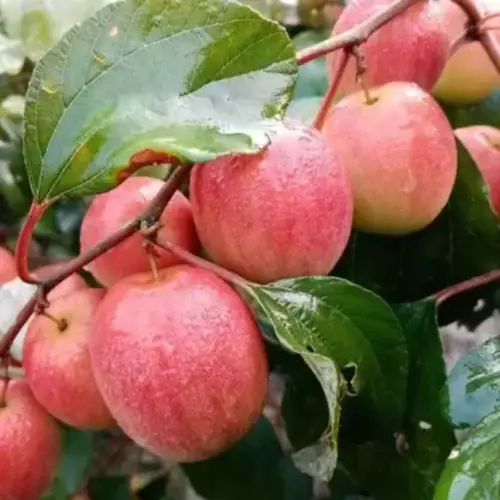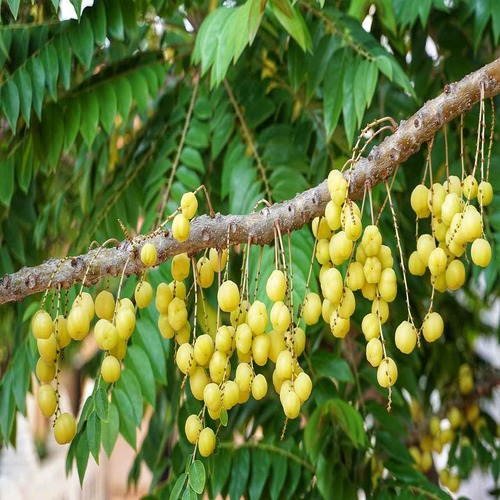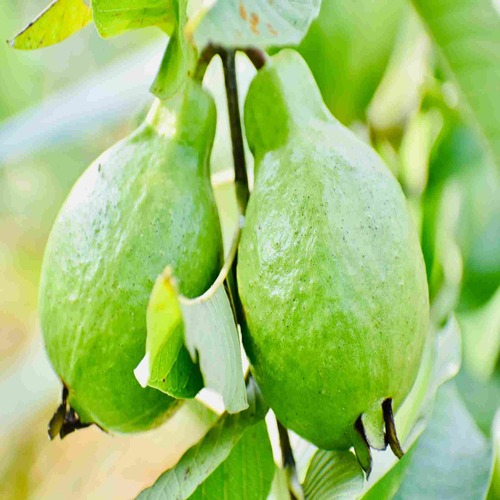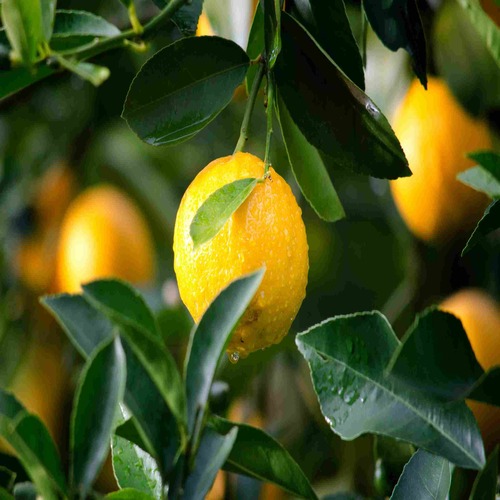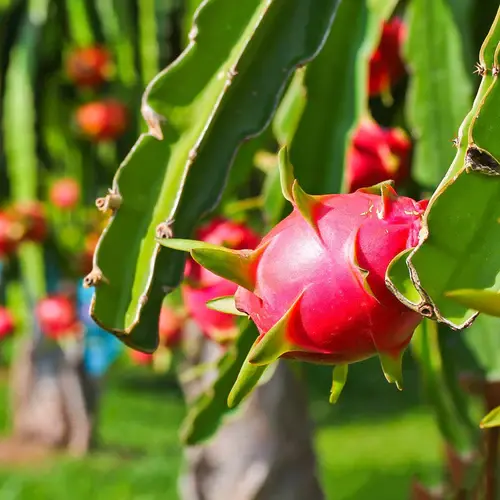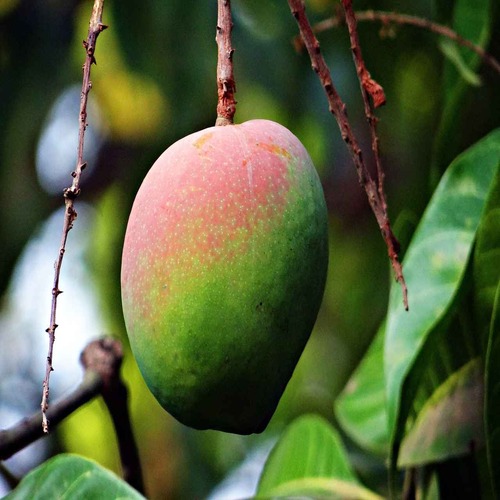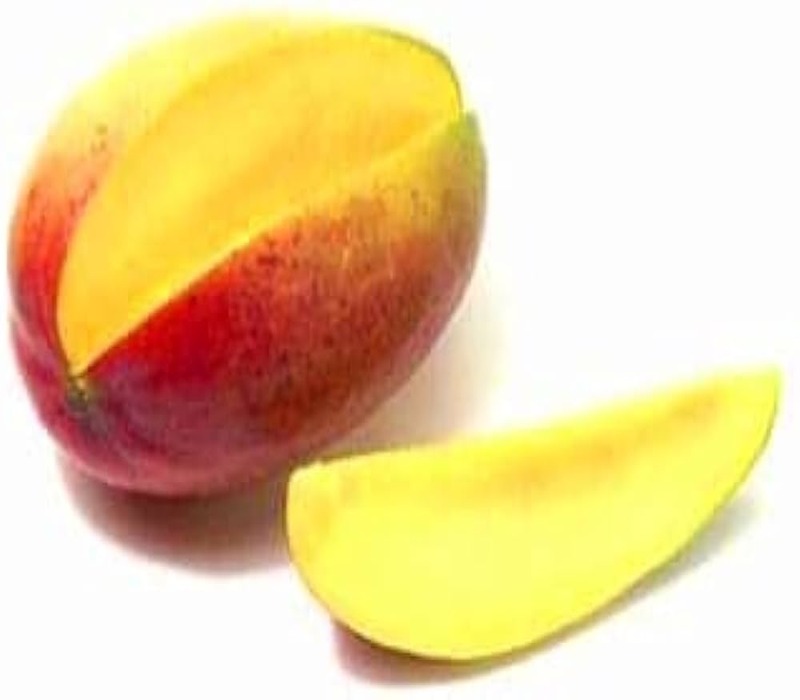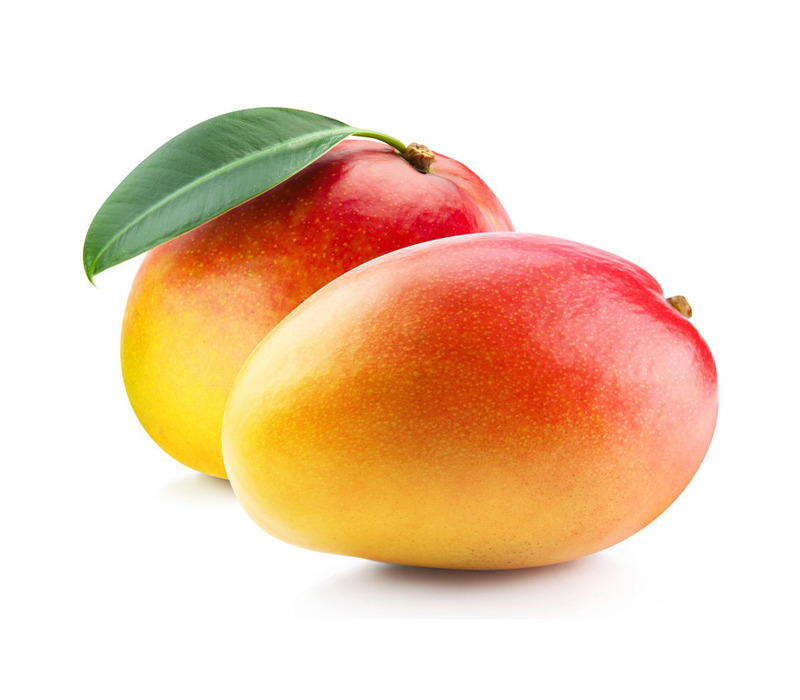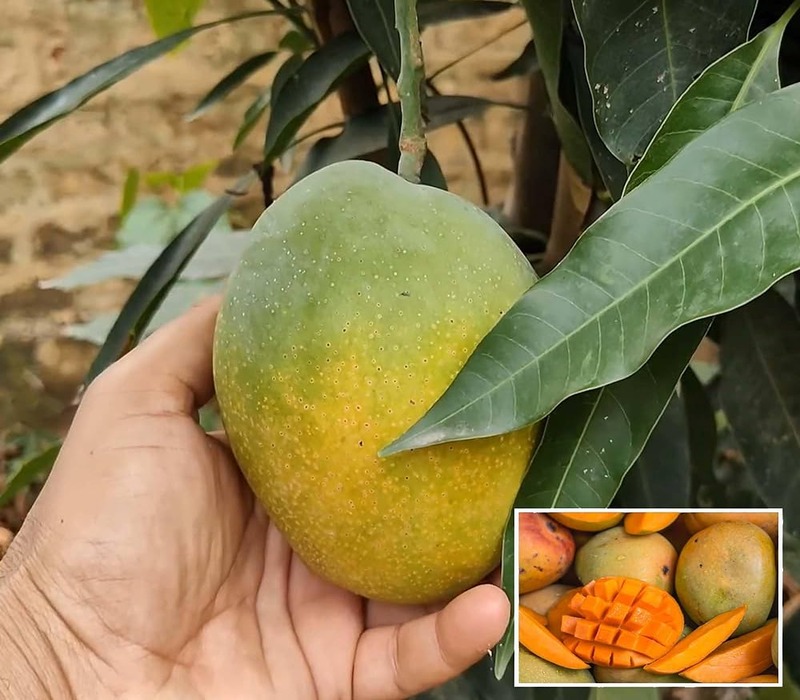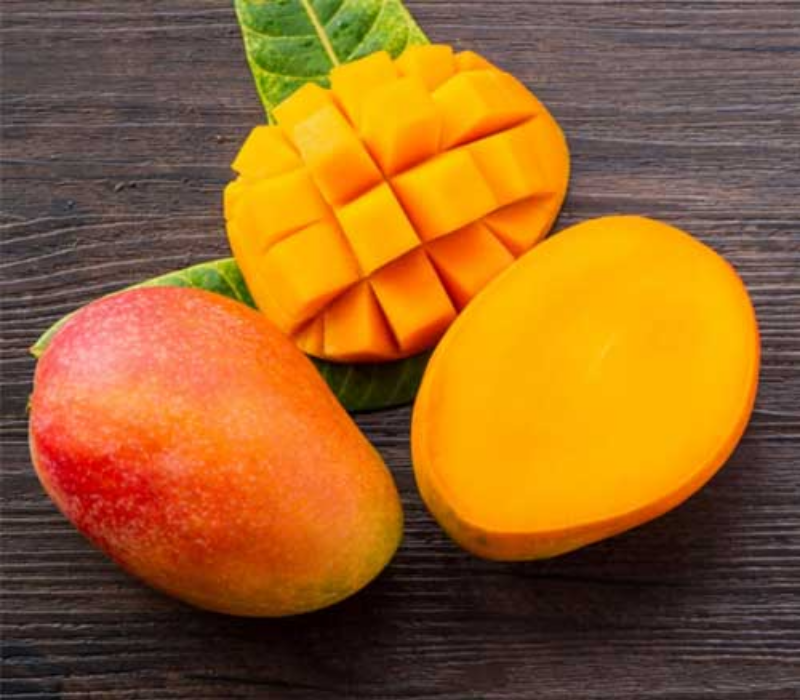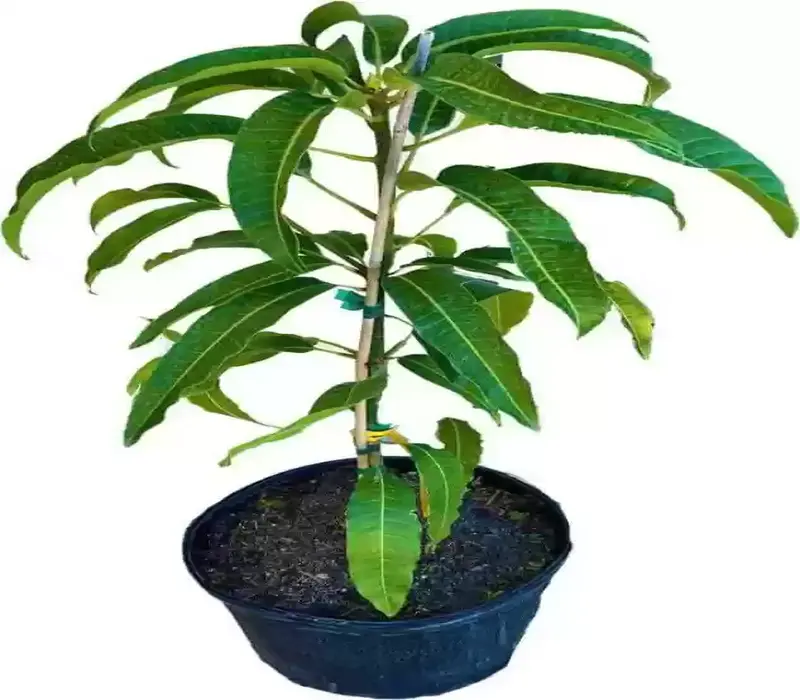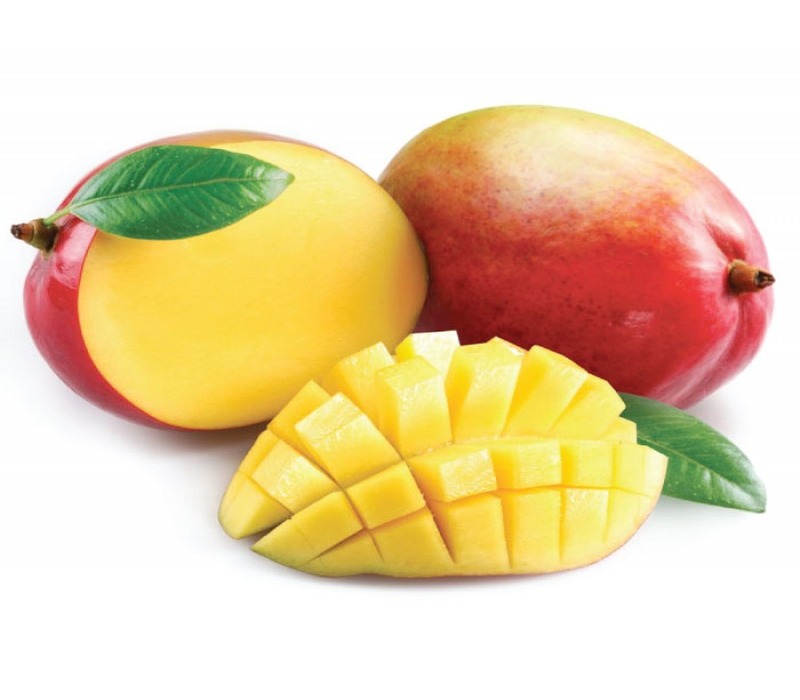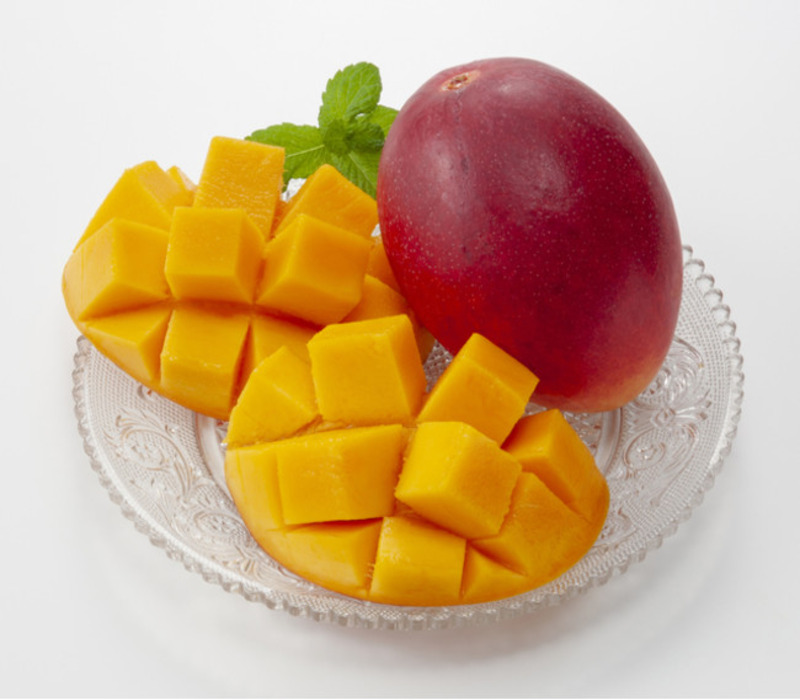Sort by
Pusa Manohari Mango
Pusa Manohari Mango
“Pusa Manohari Mango” is a premium variety of mango known for its exquisite taste, vibrant color, and aromatic fragrance. Grown primarily in India, particularly in the state of Bihar, this mango cultivar is celebrated for its juicy flesh and minimal fiber content, making it a favorite among mango enthusiasts worldwide.
- Pusa Manohari Mango is a variety of mango developed by the Indian Agricultural Research Institute (IARI), known for its distinct characteristics. Here’s a breakdown of its color, sweetness, taste, and Total Soluble Solids (TSS):
- Color:
- Skin Color: The skin of Pusa Manohari mango is typically greenish-yellow when ripe, with a slight reddish-orange tinge near the top, especially when fully mature.
- Flesh Color: The flesh is a rich golden yellow, smooth, and juicy.
- Sweetness:
- Pusa Manohari mango is known for its sweet flavor, with a good balance of sweetness and tanginess. It is less fibrous compared to other mango varieties, making it ideal for fresh consumption. The sweetness level is high, typically around 18-22% sugar content, making it very sweet and appealing to most mango lovers.
- Taste:
- The taste is mildly tangy with a delicate floral fragrance. The combination of sweetness and slight acidity creates a pleasant and refreshing taste, which is highly rated among mango varieties.
- TSS (Total Soluble Solids):
- The TSS content of Pusa Manohari mango is typically high, ranging between 19% to 22%. TSS is a key indicator of sweetness and juice content, and for Pusa Manohari, this high value reflects its rich, sugary, and juicy nature.
In summary, the Pusa Manohari mango is characterized by its bright color, high sweetness, delightful taste, and excellent TSS, making it one of the preferred varieties for consumption.
- Color:
Pusa Lalima Mango
Pusa Lalima Mango
Pusa Lalima Mango is a premium mango variety known for its exceptional sweetness, rich flavor, and vibrant color. It is cherished for its juicy flesh and aromatic taste, making it a favorite among mango enthusiasts.
- Pusa Lalima Mango is another variety developed by the Indian Agricultural Research Institute (IARI), known for its distinct features. Here’s a breakdown of its color, sweetness, taste, and Total Soluble Solids (TSS):
- Color:
- Skin Color: The skin of Pusa Lalima mango has a unique appearance, with a bright yellow base and a distinct red blush or tinge over the top portion of the fruit. The red coloration gives it an attractive, vibrant look.
- Flesh Color: The flesh is a rich, golden yellow color, characteristic of many mango varieties, with a smooth, juicy texture.
- Sweetness:
- Pusa Lalima mango is known for its moderately sweet flavor, with a balance between sweetness and mild acidity. The sweetness is prominent but not overpowering, which makes it refreshing and appealing. Its sugar content typically ranges around 16-18%.
- Taste:
- The taste of Pusa Lalima mango is pleasantly sweet with a mild tangy undertone. The mango’s flavor is smooth and juicy, offering a balanced mix of sweetness and acidity, making it ideal for direct consumption or use in mango-based products like juices or desserts.
- TSS (Total Soluble Solids):
- The TSS content of Pusa Lalima mango typically ranges between 18% to 20%, indicating a good amount of sugars and juice content. TSS is a crucial indicator of the mango’s flavor quality, and Pusa Lalima’s value reflects its moderate sweetness and juiciness.
In summary, the Pusa Lalima mango is known for its attractive appearance with a yellow and red skin, moderate sweetness, balanced flavor, and decent TSS, making it another favorite among mango enthusiasts.
- Color:
Pusa Surya Mango
Pusa Suriya Mango
The Pusa Suriya mango is a hybrid variety developed by the Indian Agricultural Research Institute. Known for its vibrant yellow color, smooth skin, and non-fibrous, firm flesh, it offers a rich, sweet flavor with a mild tang. The fruit has a high Total Soluble Solids (TSS) content of 18-20%, making it exceptionally sweet and juicy. Pusa Suriya mangoes are prized for their disease resistance, high yield, and appealing taste, making them a popular choice for both commercial cultivation and home gardens. It typically ripens in late spring to early summer.
Pusa Suriya Mango: Color, Sweetness, and TSS
Color:
The Pusa Suriya mango is known for its vibrant, bright yellow color when fully ripe. Its skin is smooth and glossy with a uniform yellow hue, making it visually appealing. The flesh of the fruit is also a rich, deep yellow, offering a striking contrast to the greenish skin before ripening.
Sweetness:
The Pusa Suriya mango is prized for its excellent sweetness. It is considered one of the sweeter varieties among mangoes. The fruit offers a balanced sweetness with a mild tangy undertone, making it highly desirable to those who enjoy a rich, fruity taste. Its flesh is smooth and non-fibrous, contributing to an overall pleasant eating experience.
Total Soluble Solids (TSS):
The TSS (Total Soluble Solids) of Pusa Suriya mangoes is typically in the range of 18-20%, which indicates a high level of sugars and dissolved solids in the fruit. A higher TSS percentage reflects a sweeter, juicier mango, and Pusa Suriya is often appreciated for its rich, sweet flavor. This high TSS makes it suitable for consumption as a fresh fruit, in desserts, or as juice.
In summary, the Pusa Suriya mango is characterized by its vibrant yellow color, sweet and tangy flavor, and high TSS (18-20%), which contributes to its overall appeal as a premium mango variety.
Arunima Mango
Pusa Arunima Mango
- The Pusa Arunima mango is a hybrid variety developed by the Indian Agricultural Research Institute (IARI), known for its high-quality fruit and excellent taste. It features a vibrant yellow-orange color with smooth, non-fibrous, and thick yellow flesh. The mango is sweet, with a balanced flavor and a high Total Soluble Solids (TSS) content of 18-22%, making it incredibly juicy and flavorful. This variety is disease-resistant, high-yielding, and suitable for both commercial cultivation and home gardens. The Pusa Arunima mango is prized for its rich taste, high yield, and attractive appearance.
- The Pusa Arunima mango is known for its vibrant color, excellent sweetness, and high Total Soluble Solids (TSS), which are key factors in its appeal.
Color:
The Pusa Arunima mango has a striking yellow-orange color when ripe, with a smooth and glossy skin. The fruit typically develops a golden yellow hue with slight reddish-orange blushes on its top, especially when fully mature. The flesh inside is bright yellow, which is a characteristic feature of high-quality mango varieties.
Sweetness:
The Pusa Arunima mango is known for its exceptional sweetness, which is one of its defining characteristics. The fruit offers a rich, sweet flavor with a subtle tangy undertone, creating a well-balanced taste. The sweetness is highly appreciated by mango enthusiasts, making it a desirable variety for fresh consumption, juicing, and desserts.
Total Soluble Solids (TSS):
The Total Soluble Solids (TSS) of the Pusa Arunima mango typically ranges between 18-22%. A higher TSS value reflects a higher concentration of sugars, making the mango juicier and sweeter. This TSS range places the Pusa Arunima mango in the category of sweet and flavorful mango varieties, with the fruit’s rich taste and high juiciness contributing to its popularity.
In summary, the Pusa Arunima mango has a vibrant yellow-orange color, an excellent sweetness profile, and a TSS range of 18-22%, making it one of the more desirable mango varieties for its flavor and quality.
Arunika Mango
Puas Arunika Mango
As of my last update in April 2023, detailed information on an “Arunika Mango” specifically might not be widely available or it could be a less commonly known or newly introduced variety of mango. Mango varieties are vast and diverse, with many being cultivated and developed across different regions of the world. Each variety has its own unique set of characteristics, including taste, color, size, and texture.
However, if “Arunika Mango” refers to a specific cultivar that has been developed or introduced after my last update, here are some general attributes that are often considered when describing mango varieties:
- The Pusa Arunika mango is known for its appealing color, excellent sweetness, and high Total Soluble Solids (TSS) content, which contribute to its high quality and consumer preference.
- Color:
- The Pusa Arunika mango has a bright, golden-yellow color when ripe. It may also show a slight red blush on the top near the stem, giving it a visually attractive appearance. The smooth, shiny skin enhances its appeal, making it a popular choice for both domestic consumption and commercial markets.
- Sweetness:
- The Pusa Arunika mango is highly sweet, offering a well-balanced flavor that combines rich sweetness with a mild tangy undertone. This makes it a favorite among those who enjoy a sweeter mango with a slight refreshing acidity. The fruit’s sweetness is one of its standout features, contributing to its appeal for fresh eating, juicing, and desserts.
- Total Soluble Solids (TSS):
- The Total Soluble Solids (TSS) of the Pusa Arunika mango typically ranges between 18-22%. TSS is an indicator of the fruit’s sugar content, and a higher TSS percentage generally means that the mango is sweeter and juicier. With its 18-22% TSS, the Pusa Arunika mango is considered to be quite sweet and flavorful, making it ideal for consumption in a variety of culinary preparations.
- In summary, the Pusa Arunika mango is characterized by its golden-yellow color, sweet flavor with mild tang, and a high TSS ranging from 18-22%, making it a premium mango variety known for its excellent taste and juiciness.
CISH Ambika Mango
CISH Ambika Mango
- The Cish Ambika mango is a high-quality hybrid variety known for its vibrant golden-yellow color and smooth, non-fibrous flesh. It has a rich, sweet flavor with a slight tanginess, making it a favorite for fresh consumption and various culinary uses. The mango has a small seed and a high pulp-to-seed ratio, offering a generous amount of juicy, succulent fruit. With disease resistance and high yield, it is ideal for both commercial farming and home cultivation. The Cish Ambika mango is prized for its sweetness, texture, and productivity, making it a popular choice among mango enthusiasts.
- The Cish Ambika mango is known for its appealing color, excellent sweetness, and high Total Soluble Solids (TSS), making it a standout variety.
- Color:
- The Cish Ambika mango has a striking golden-yellow color when ripe, with a slight reddish-orange blush on the top near the stem. The smooth, shiny skin and vibrant color make it visually attractive, signaling that it is fully ripe and ready to eat.
- Sweetness:
- The Cish Ambika mango is recognized for its rich sweetness, which is a key characteristic of this variety. The fruit has a well-balanced flavor, combining the sweetness with a subtle tanginess that enhances its refreshing taste. The mango’s sweetness is appreciated by consumers who enjoy a tropical, flavorful fruit.
- Total Soluble Solids (TSS):
- The Total Soluble Solids (TSS) of the Cish Ambika mango typically ranges between 18-22%. A higher TSS percentage indicates a high sugar content, making the fruit sweet, juicy, and full of flavor. The TSS range of 18-22% places the Cish Ambika mango among the sweeter mango varieties, contributing to its popularity for fresh eating and processing.
- In summary, the Cish Ambika mango is characterized by its golden-yellow color, sweet flavor, and a TSS of 18-22%, making it a highly desirable mango variety for both taste and quality.
Miyazaki Mango
“Japani Miyazaki Mango /Egg Of The Sun “
The Miyazaki mango, also known as the “Egg of the Sun”, is a premium variety of mango from Japan, famous for its exceptional sweetness, rich flavor, and perfect appearance. It is a large, bright red mango with smooth, thin skin and minimal blemishes. The flesh is firm, non-fibrous, and has a vibrant golden-yellow color. Known for its high sugar content, the Miyazaki mango can have a Brix level of 15-17%, making it incredibly sweet. This variety is highly prized for its luxurious taste and is often sold at high-end markets, sometimes fetching very high prices due to its limited production and meticulous cultivation process.
- Miyazaki Mango Taste Profile:-
- Sweetness: The Miyazaki Mango is celebrated for its exceptionally high sugar content, which often exceeds 15%. This gives the fruit an intense sweetness that is richer and more pronounced than that of many other mango varieties.
- Flavor: Beyond just sweet, the flavor of Miyazaki Mangoes is complex, embodying a blend of peach, pineapple, and traditional mango tastes. Some describe it as having a hint of citrus or melon, making its flavor profile multi-dimensional.
- Texture: The flesh of the Miyazaki Mango is incredibly smooth and buttery, with minimal to no fiber content. This quality makes the mango melt in your mouth, enhancing the overall taste experience.
- Aroma: The fragrance of this mango variety is equally notable, with a strong, sweet, and fruity aroma that can fill a room, hinting at the richness of flavor even before the first bite.
- Aftertaste: The aftertaste of Miyazaki Mangoes is pleasant and lingering, with a sweet note that stays on the palate, encouraging you to savor every bite.
This exquisite taste profile, combined with the fruit’s luxurious appearance and texture, makes Miyazaki Mangoes a coveted delicacy among fruit lovers and gourmets worldwide.
- Color:-
- Primary Color: The skin of the Miyazaki Mango is predominantly a brilliant, deep red. This striking coloration is one of its most distinguishing features.
- Secondary Hues: Alongside the red, you may notice gradients of yellow and orange, especially around the base or on parts of the mango less exposed to sunlight. These hues blend beautifully, creating a sunset-like appearance on the skin.
- Flesh Color: Inside, the flesh of the Miyazaki Mango is a rich, bright yellow to golden color, which contrasts vividly with its red exterior. This golden flesh is not only visually appealing but also indicates the fruit’s ripe sweetness.
